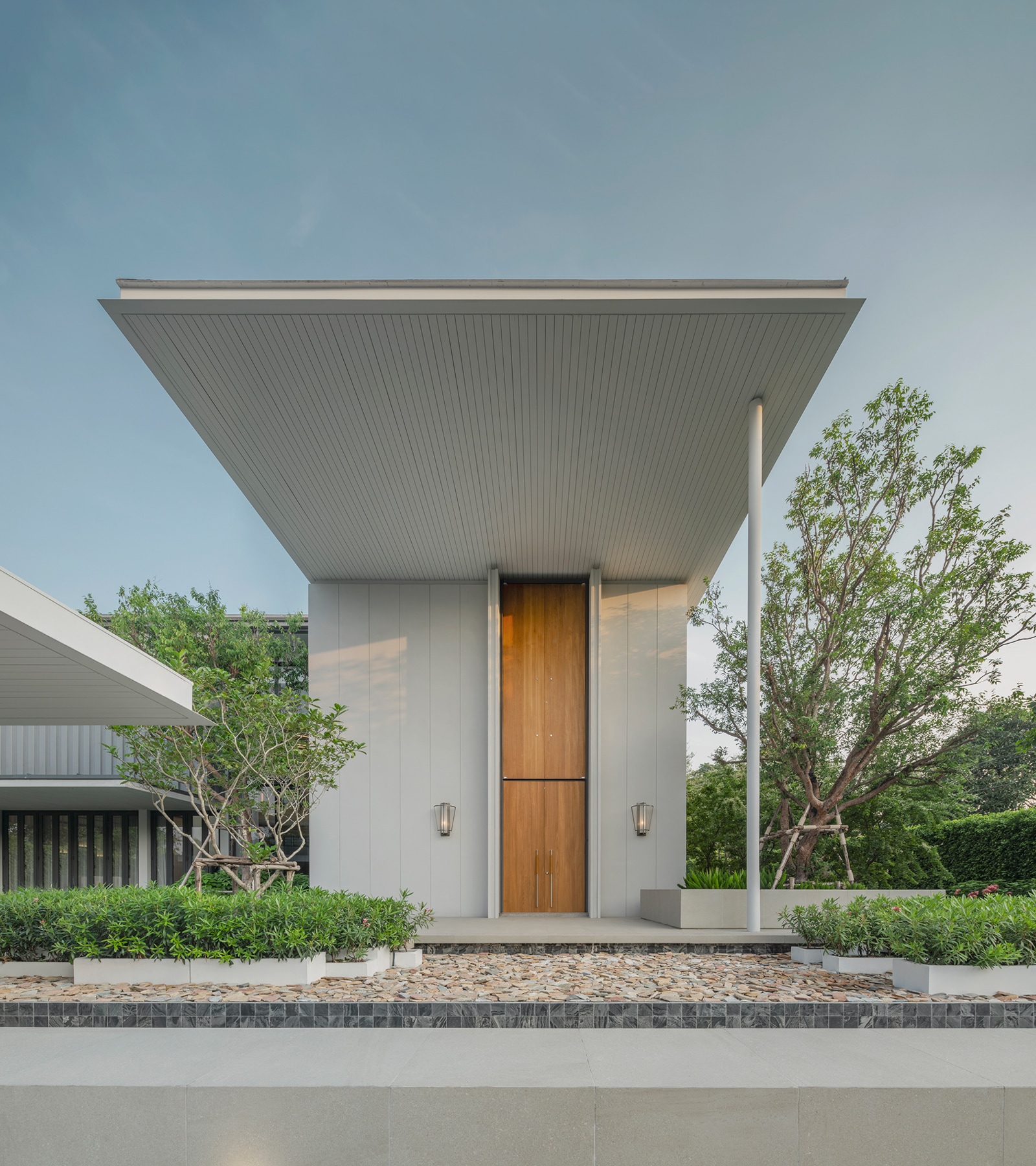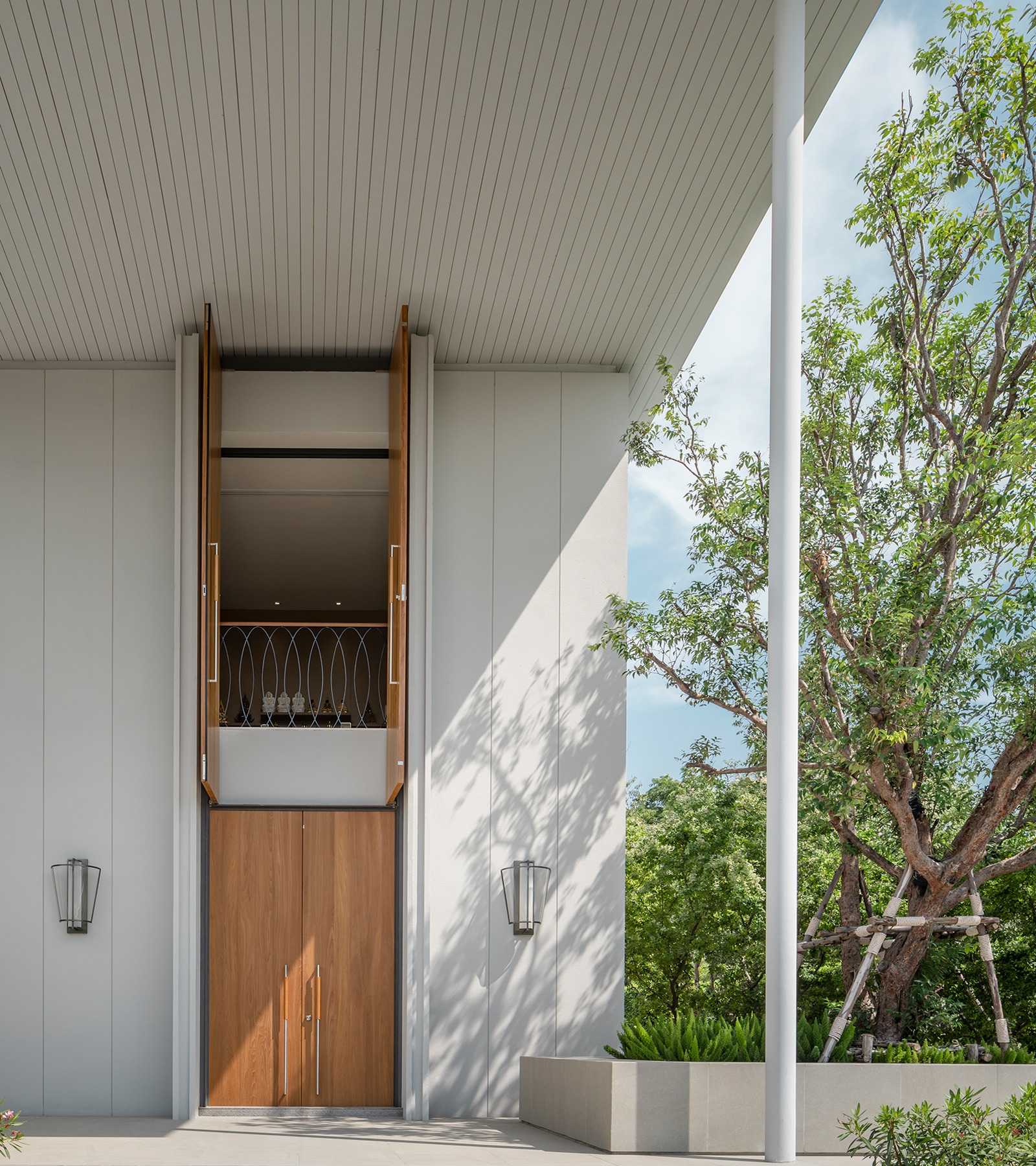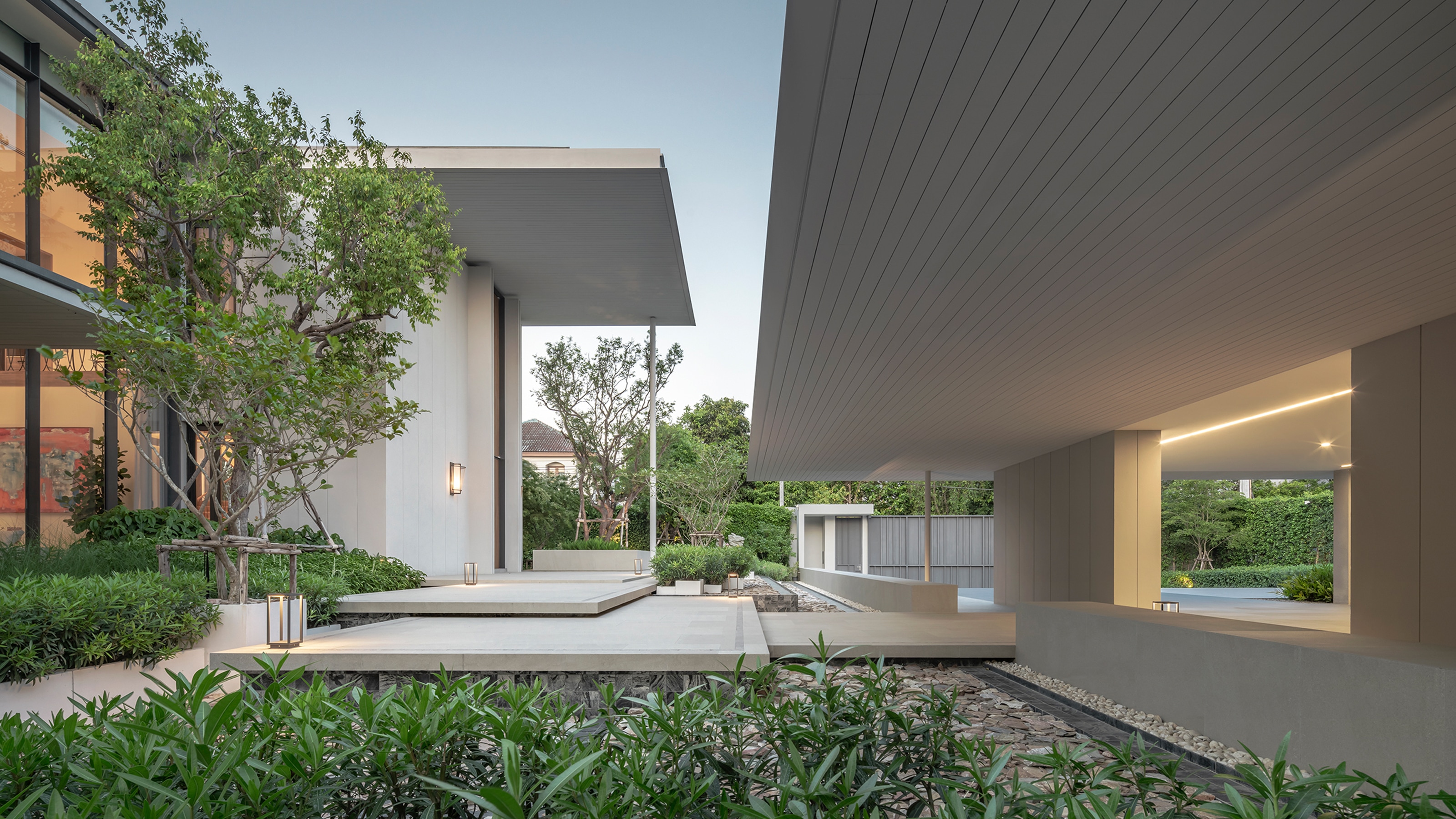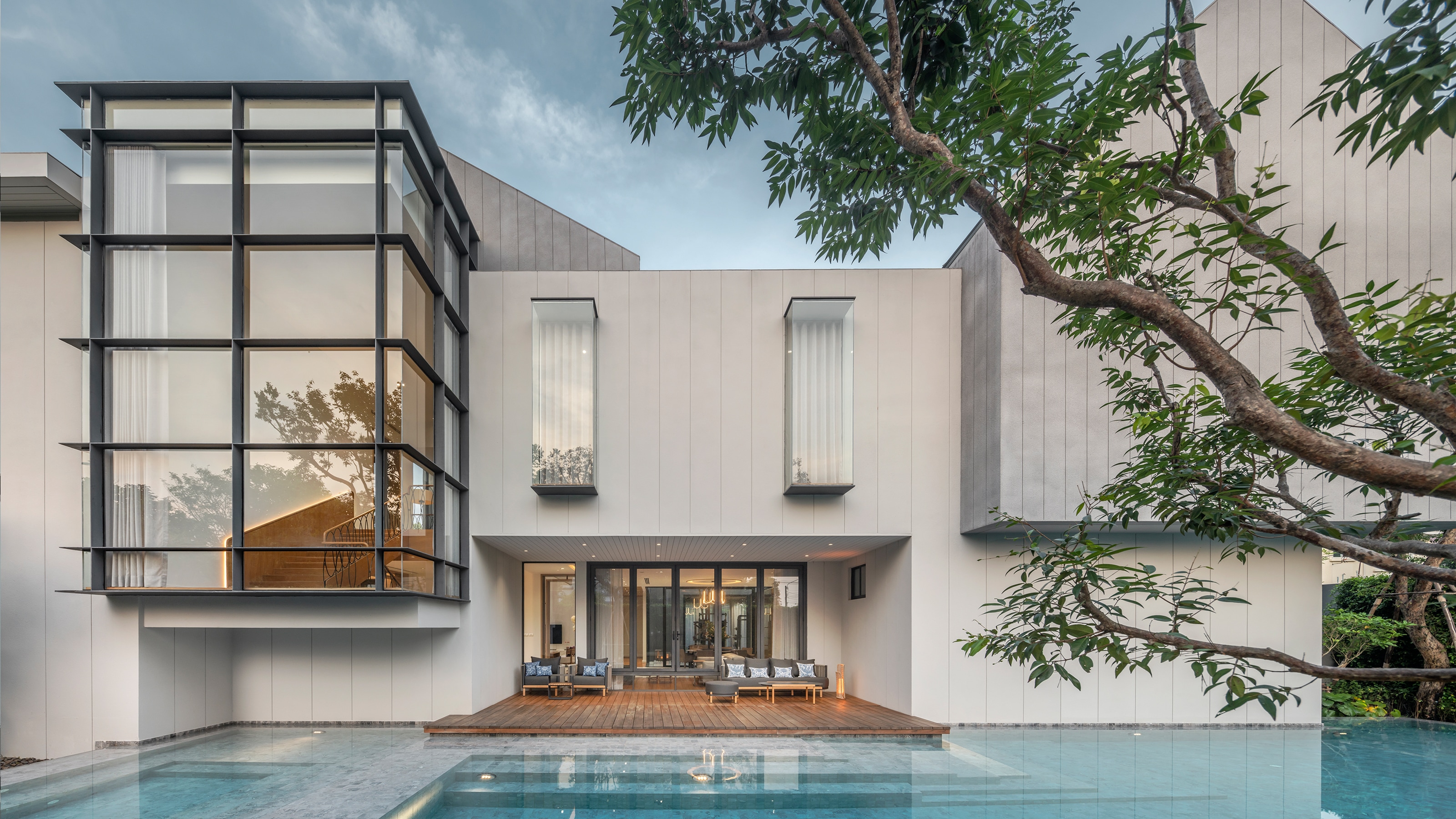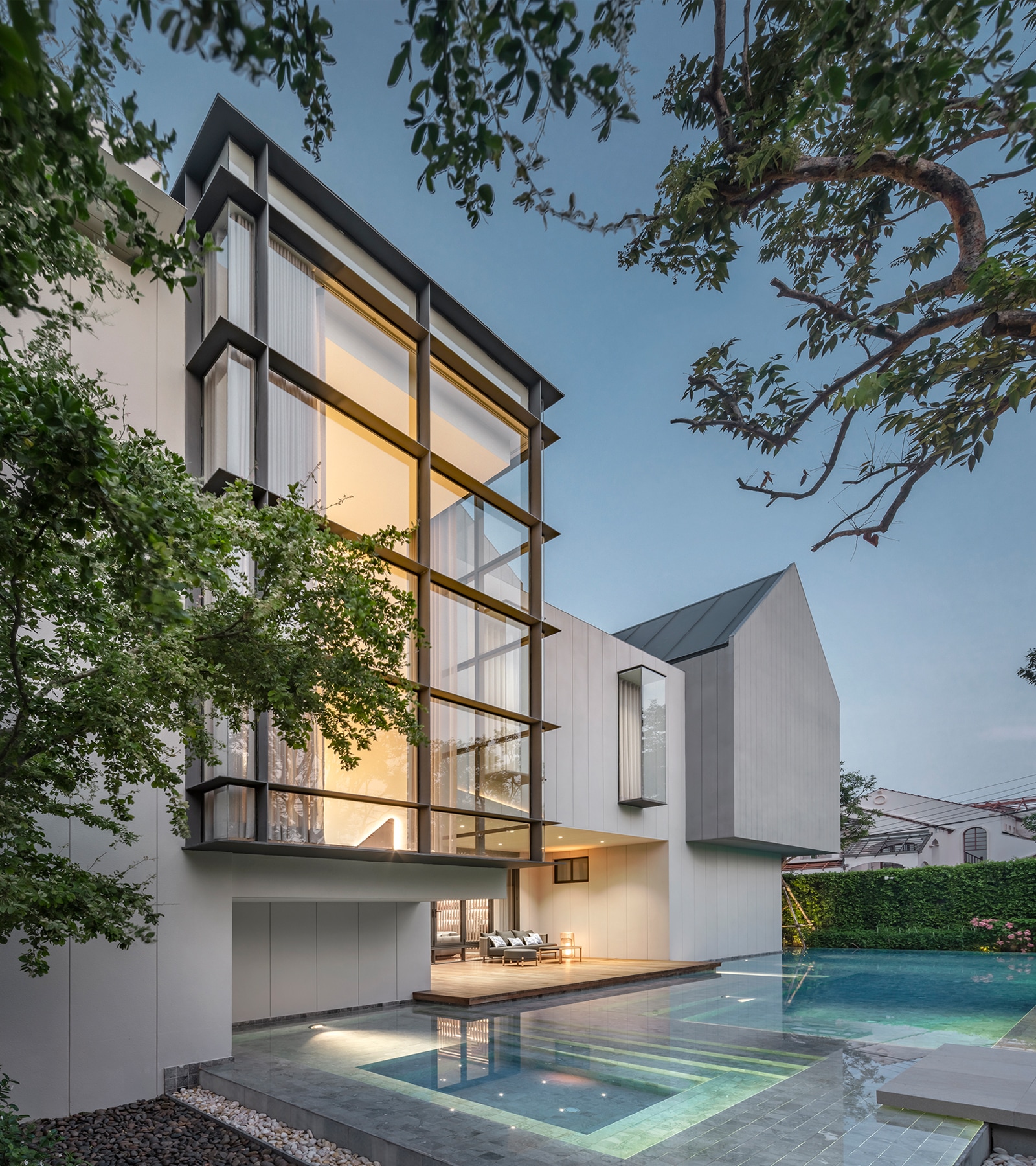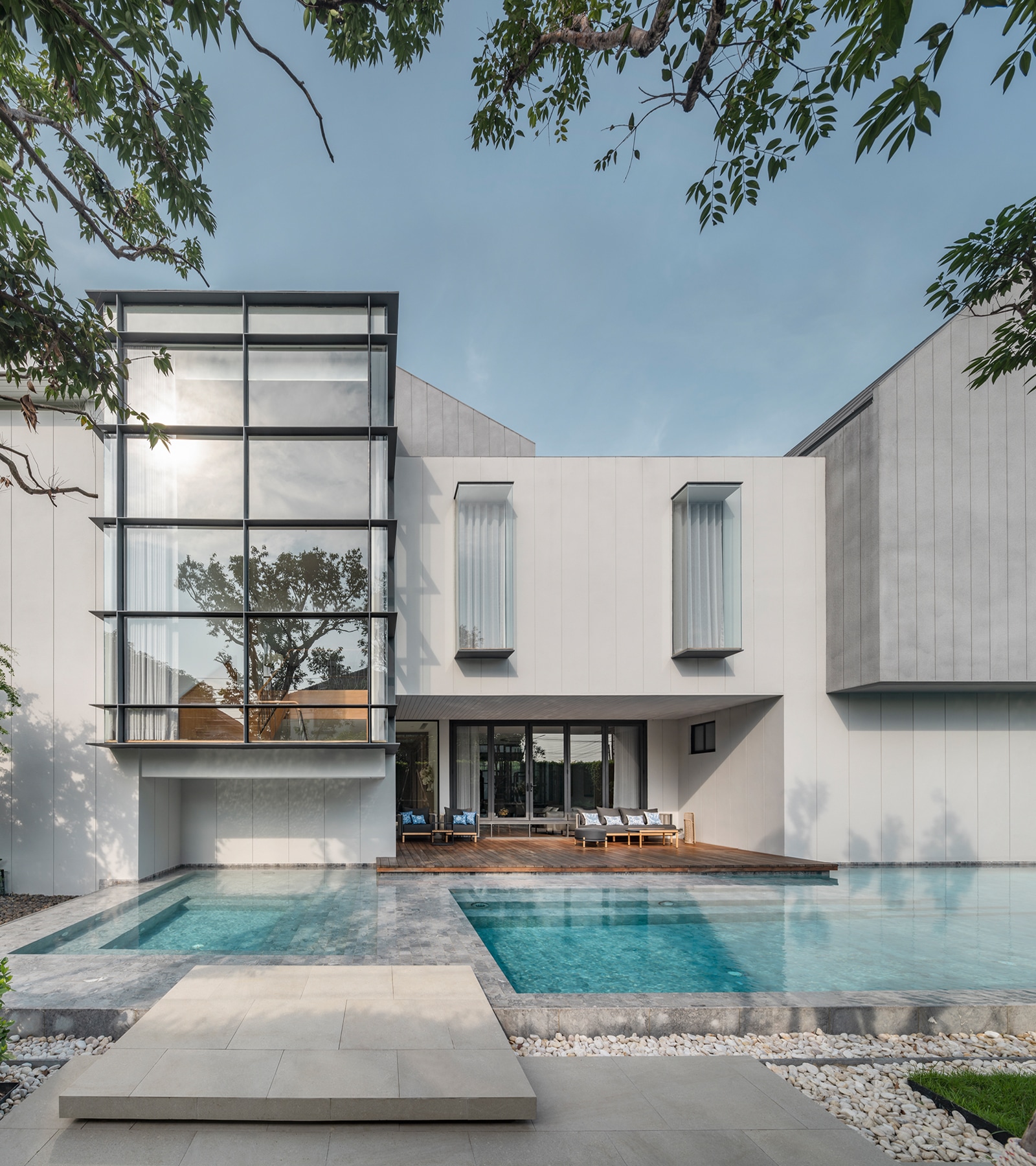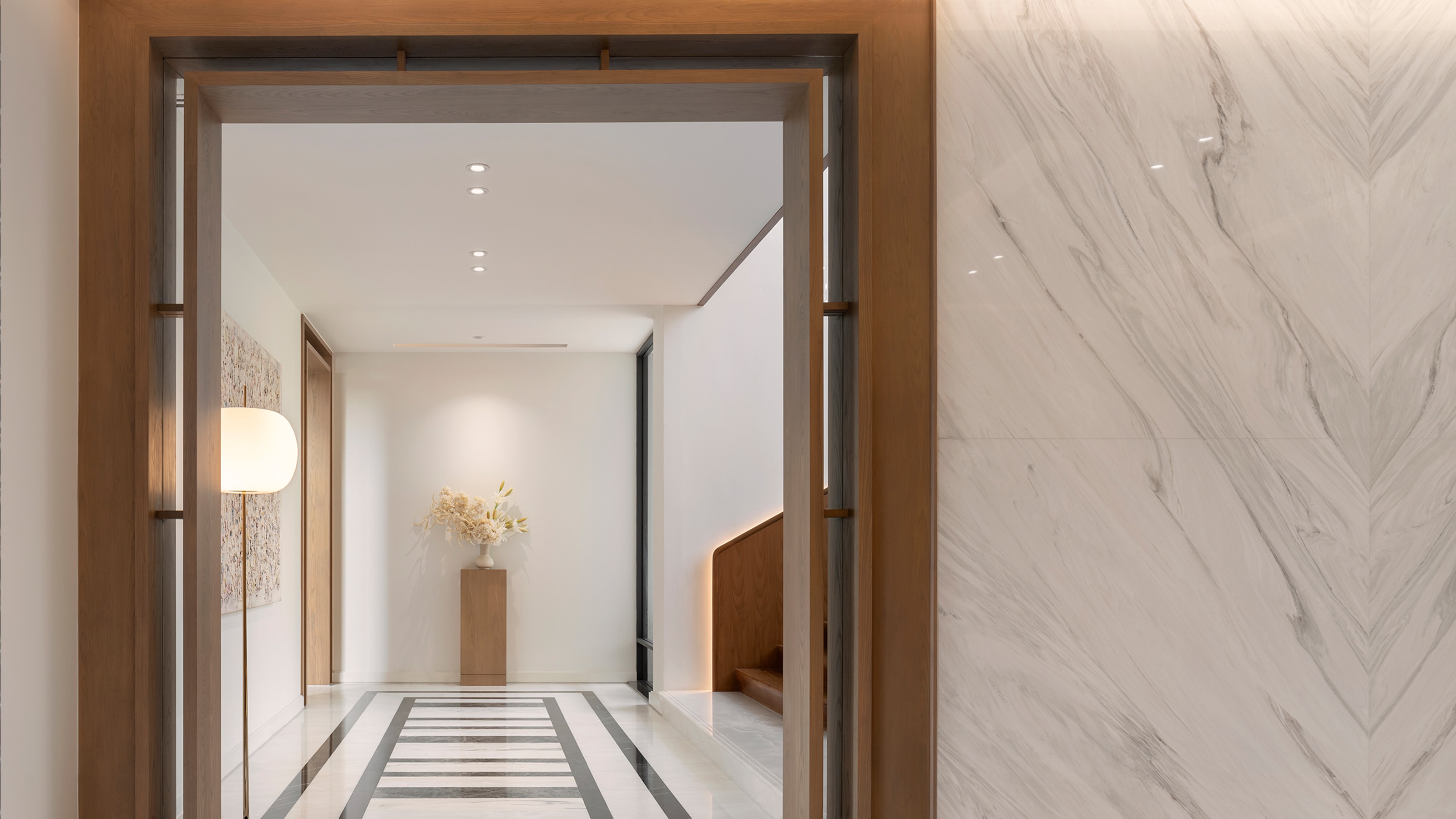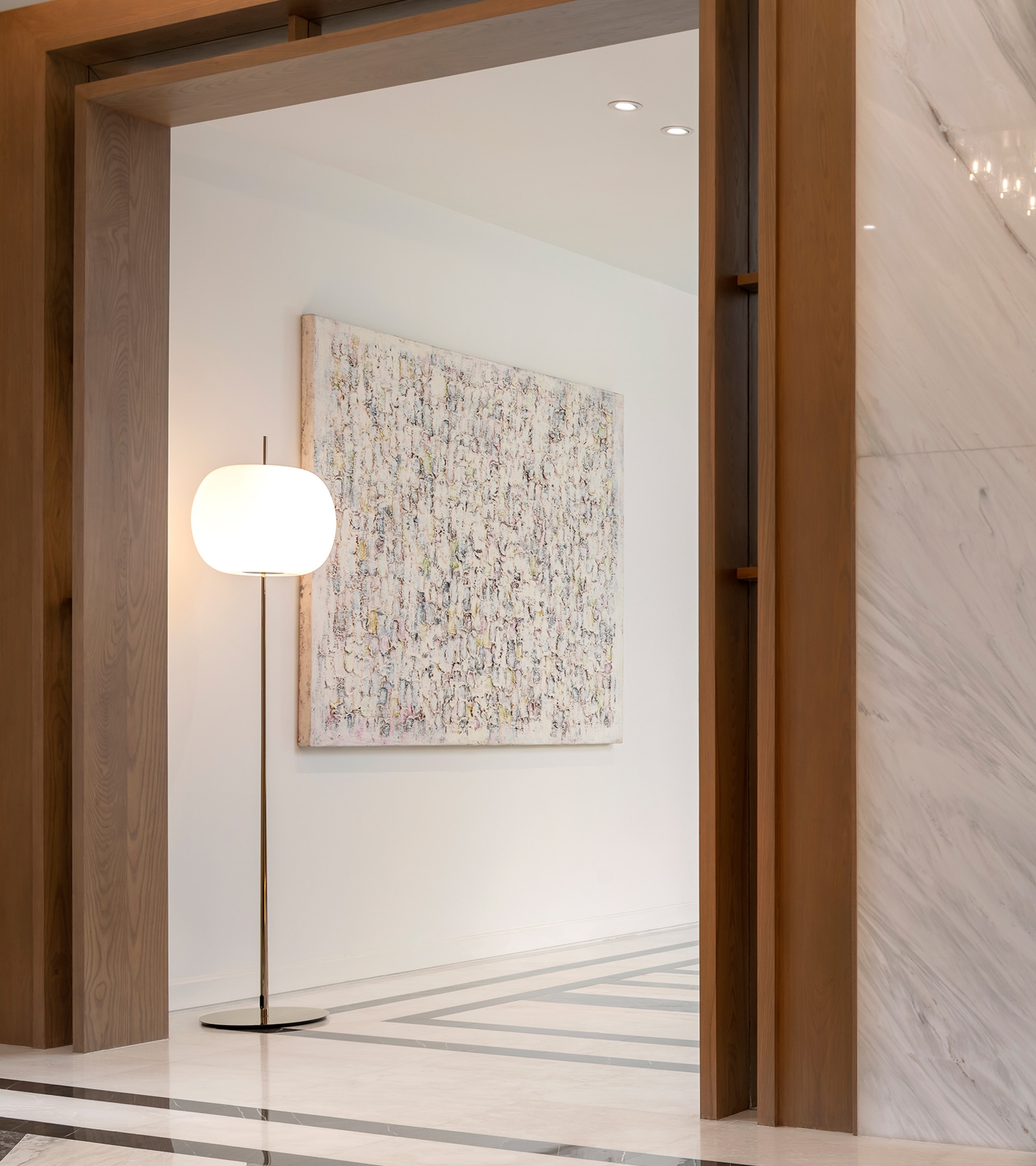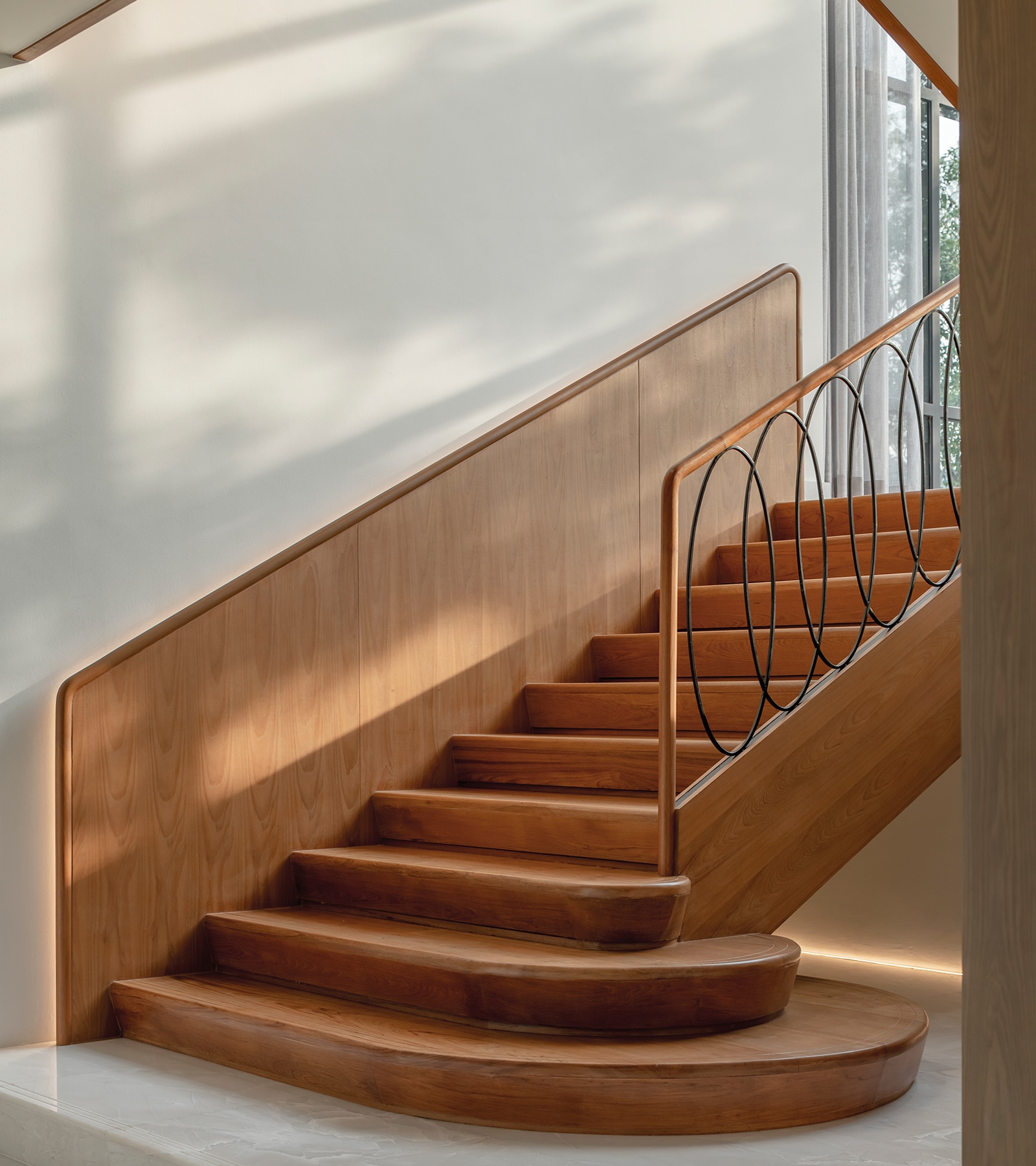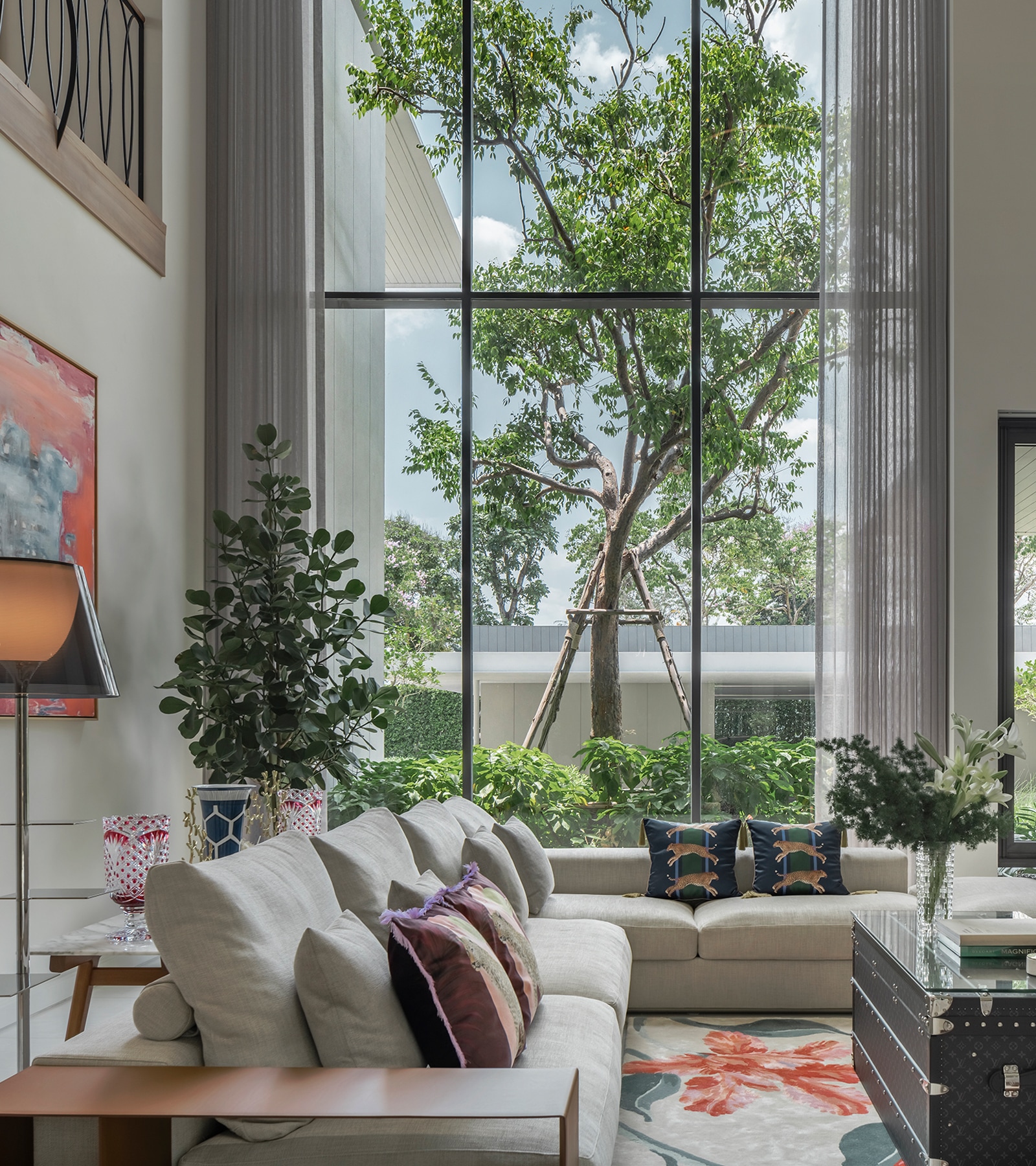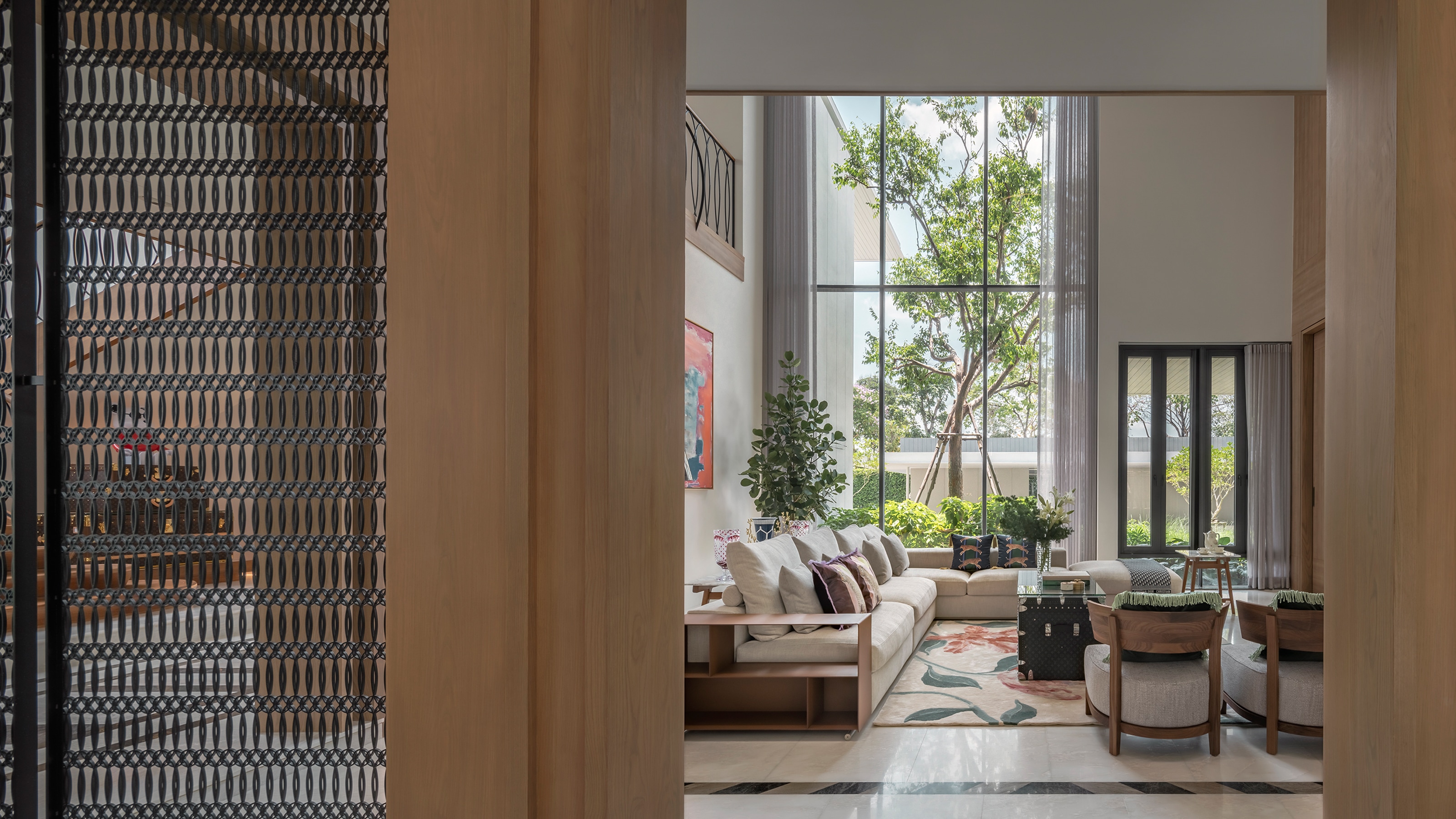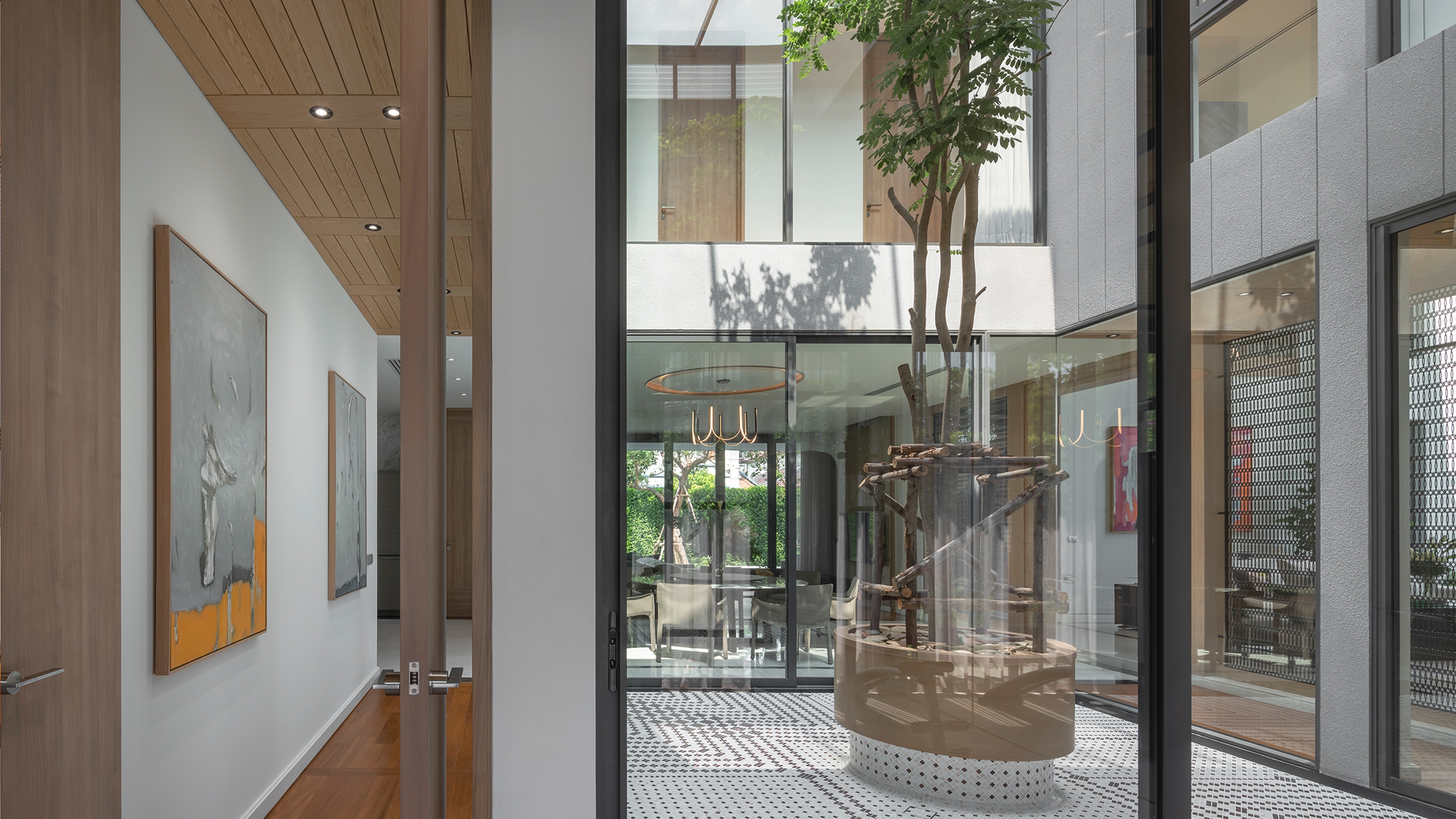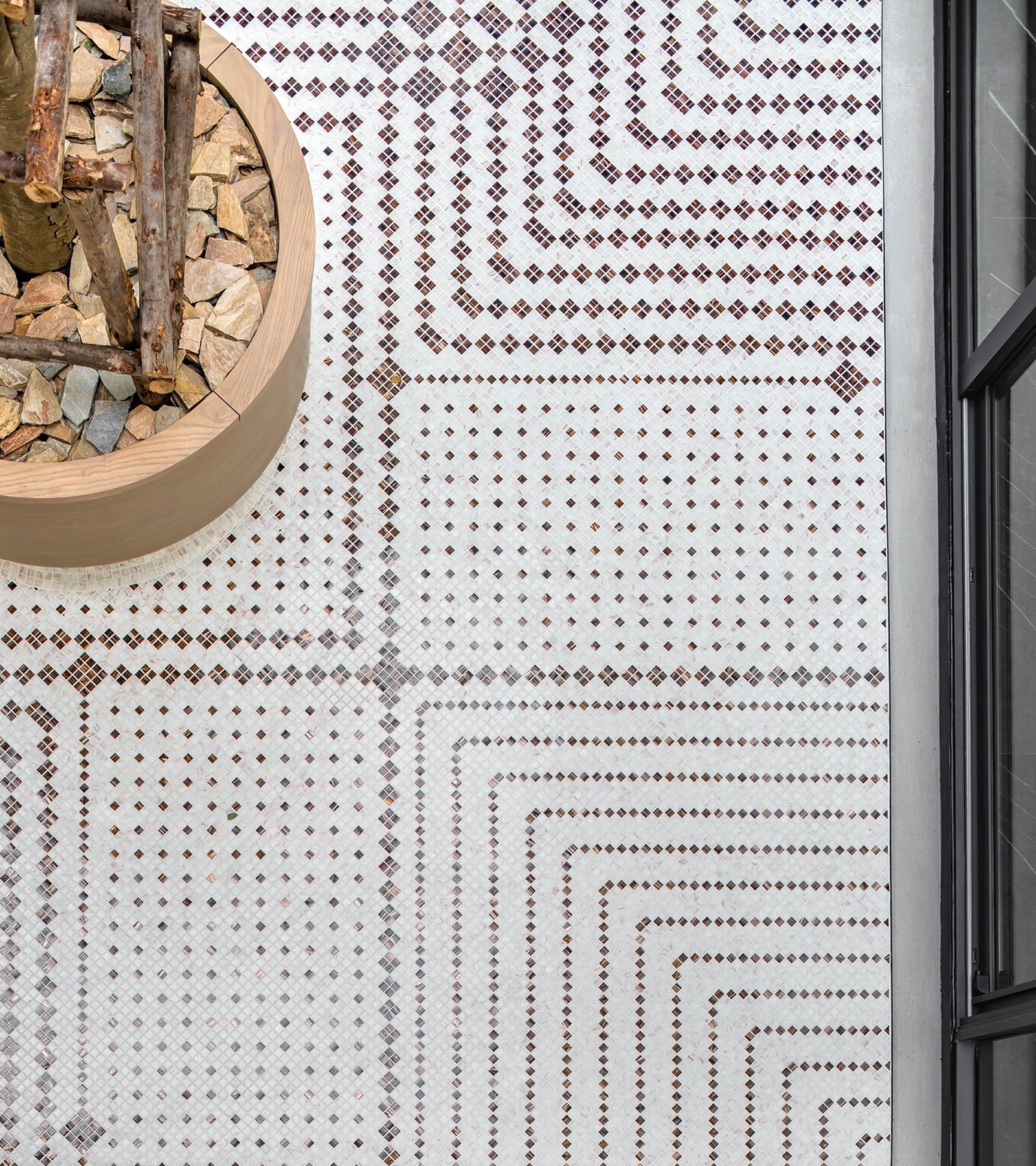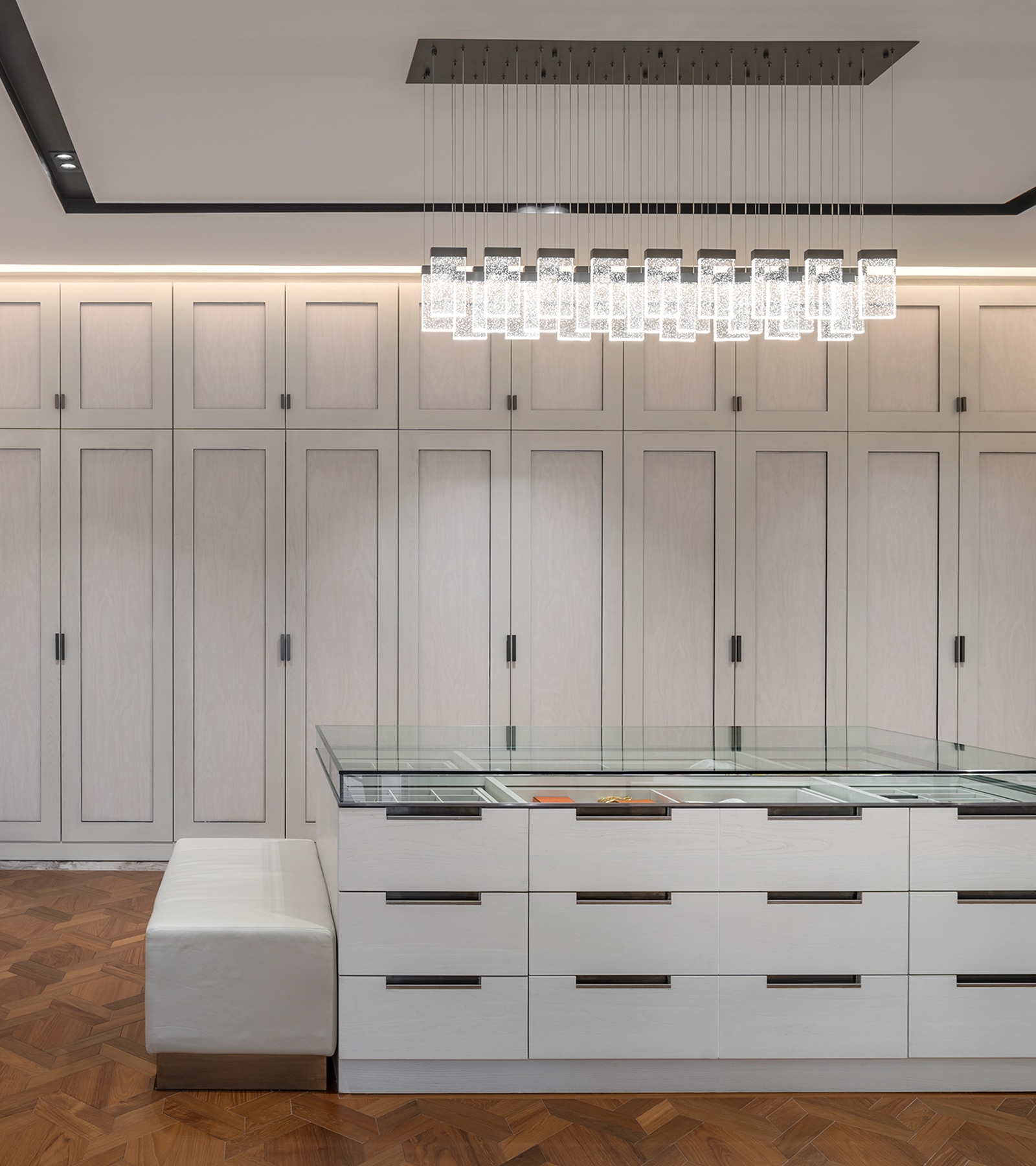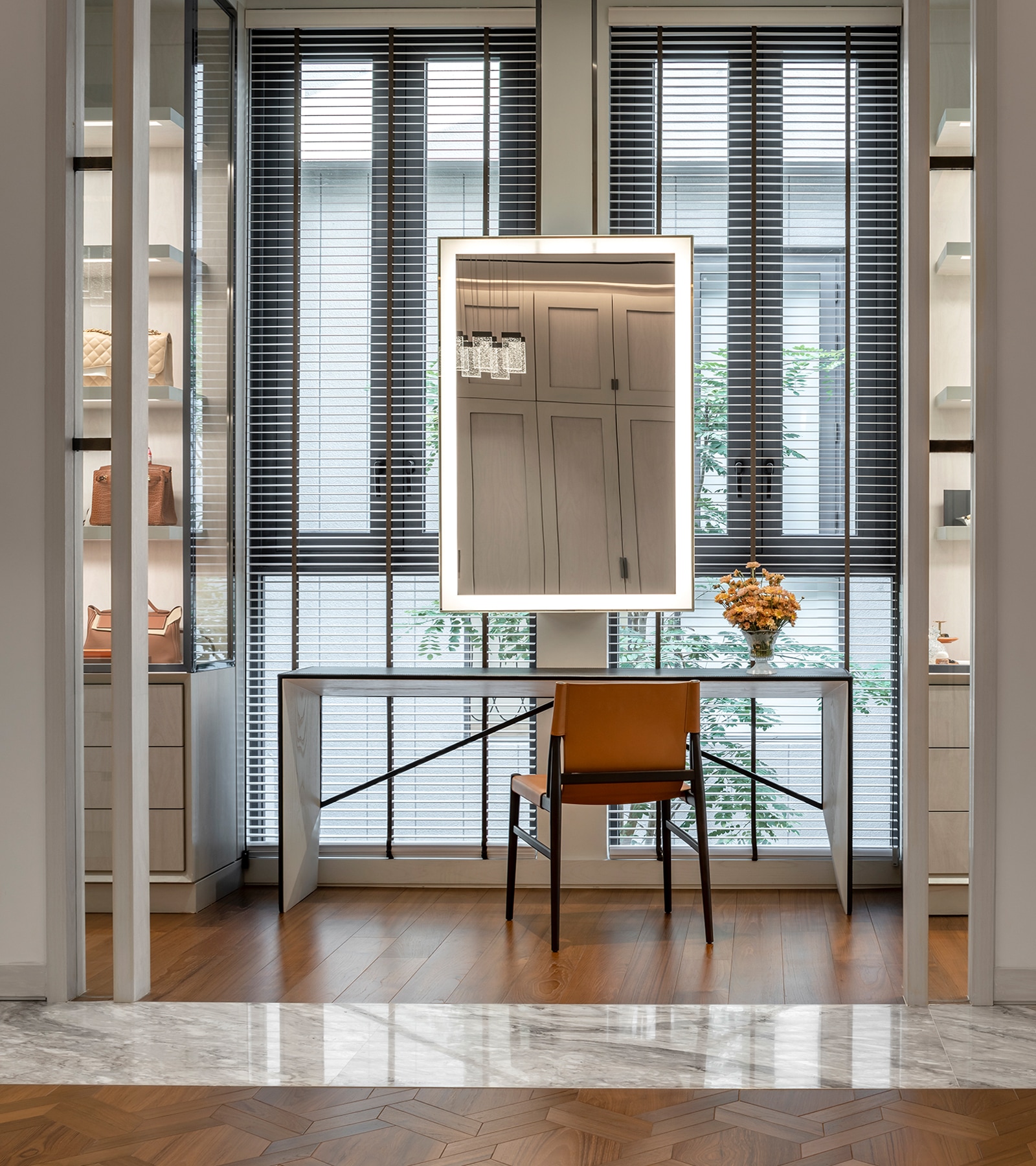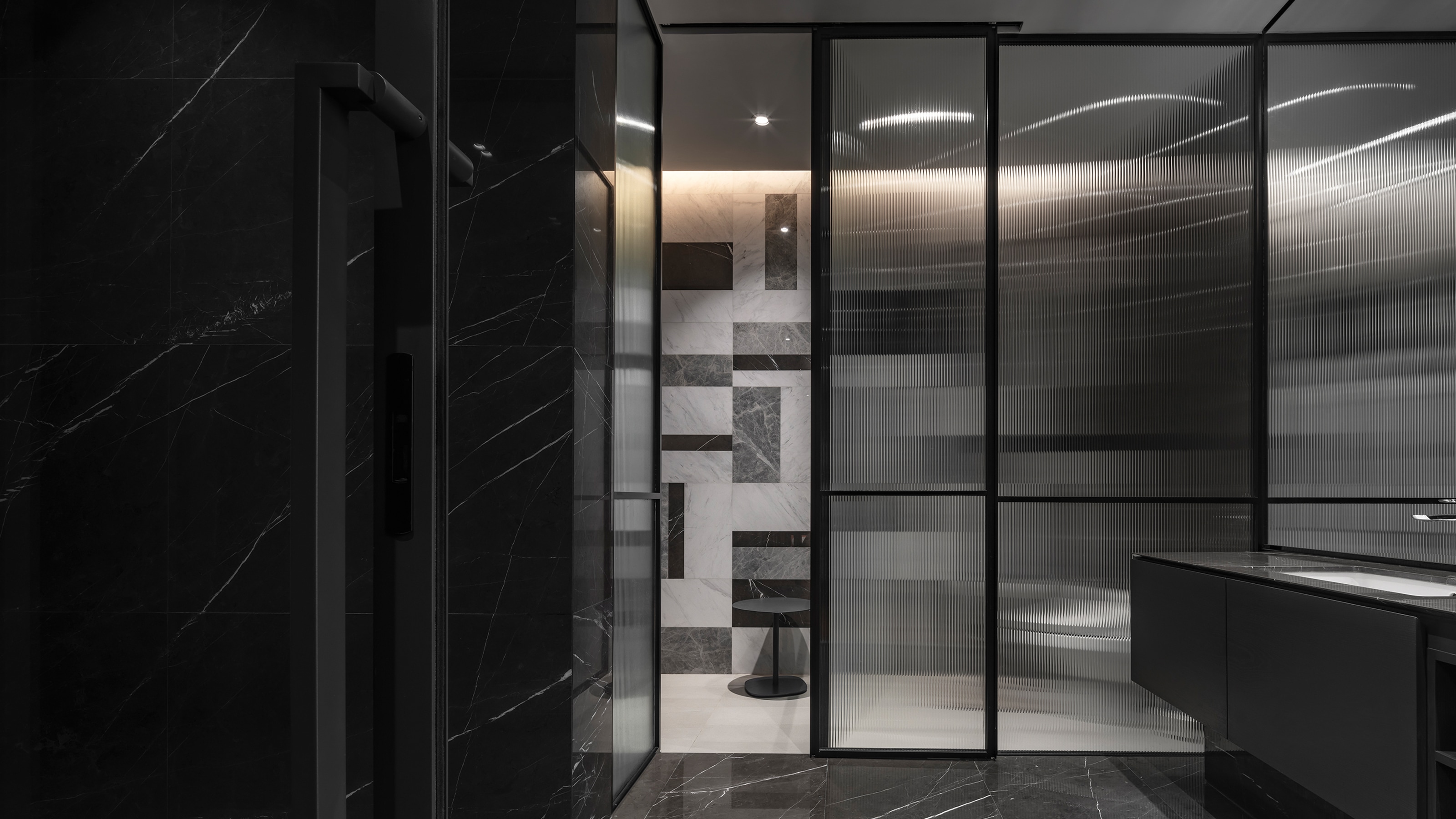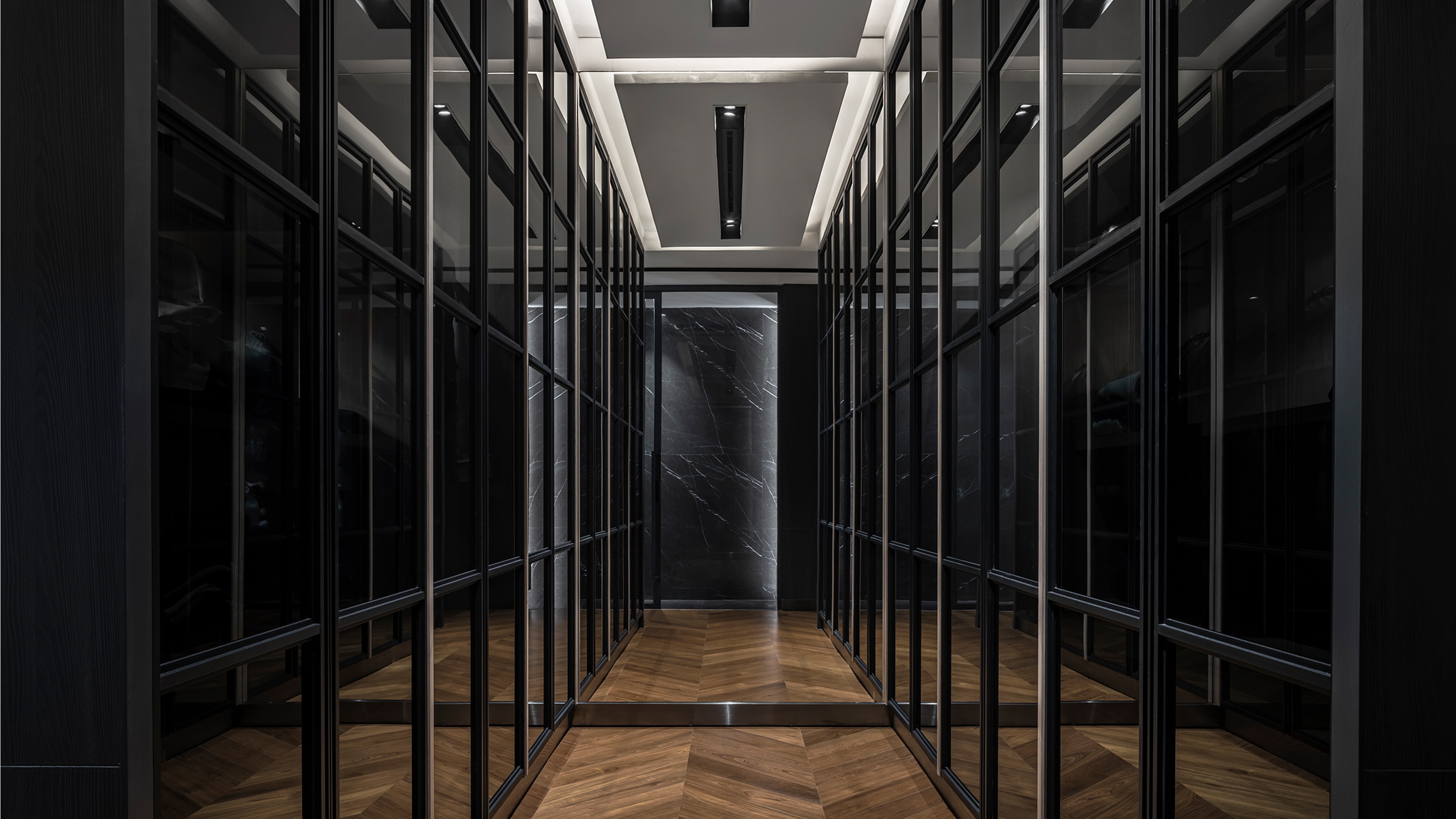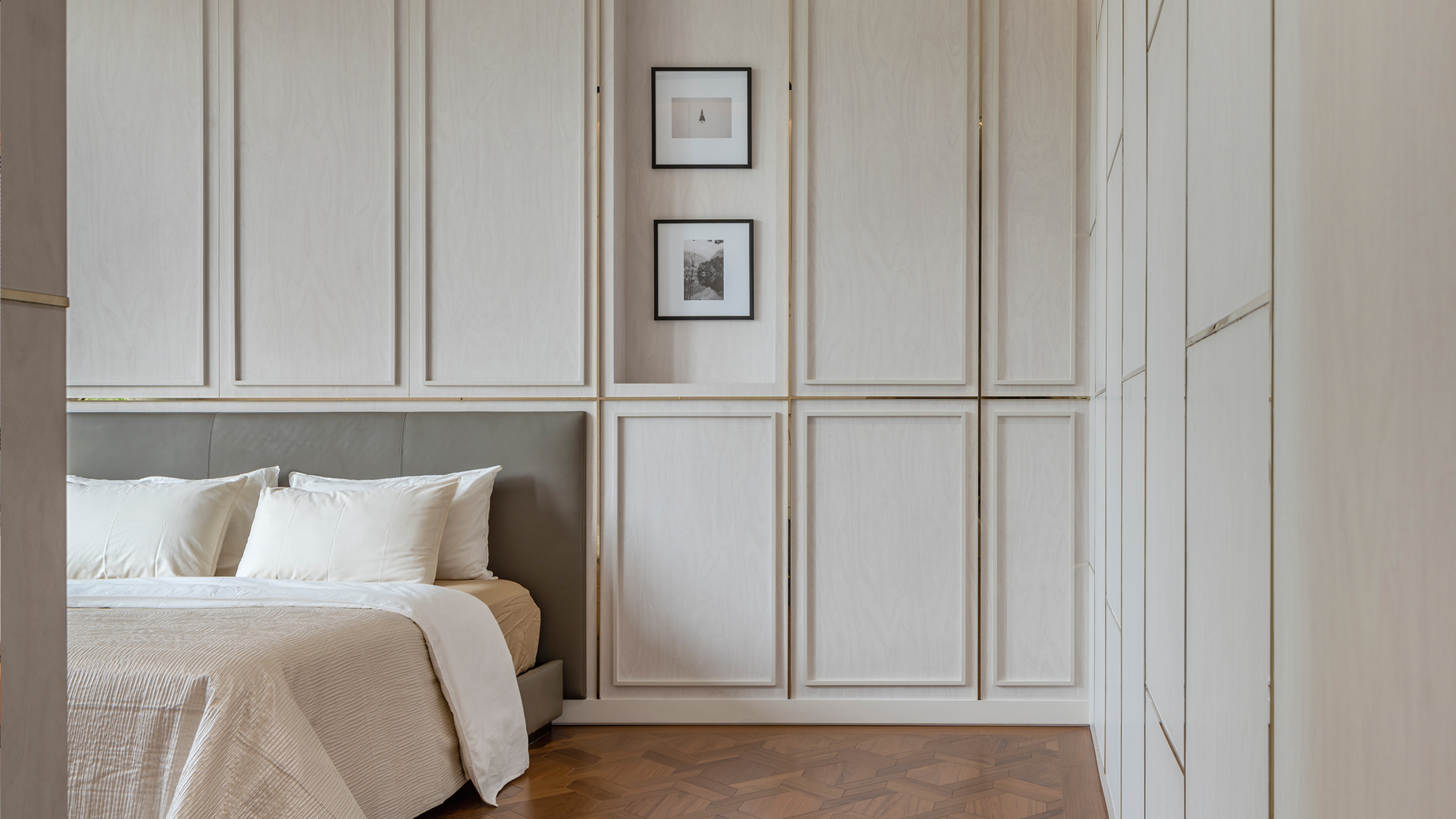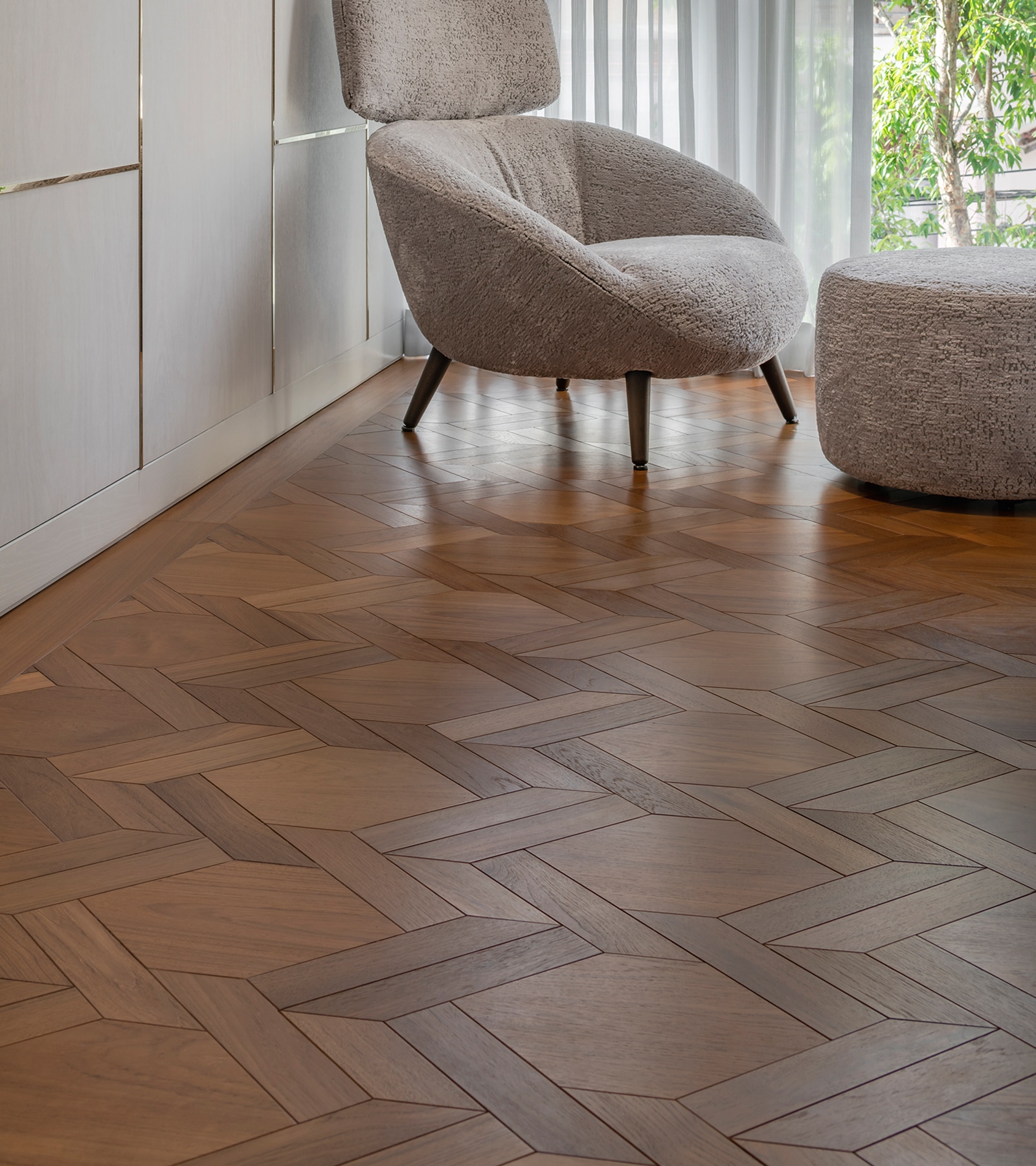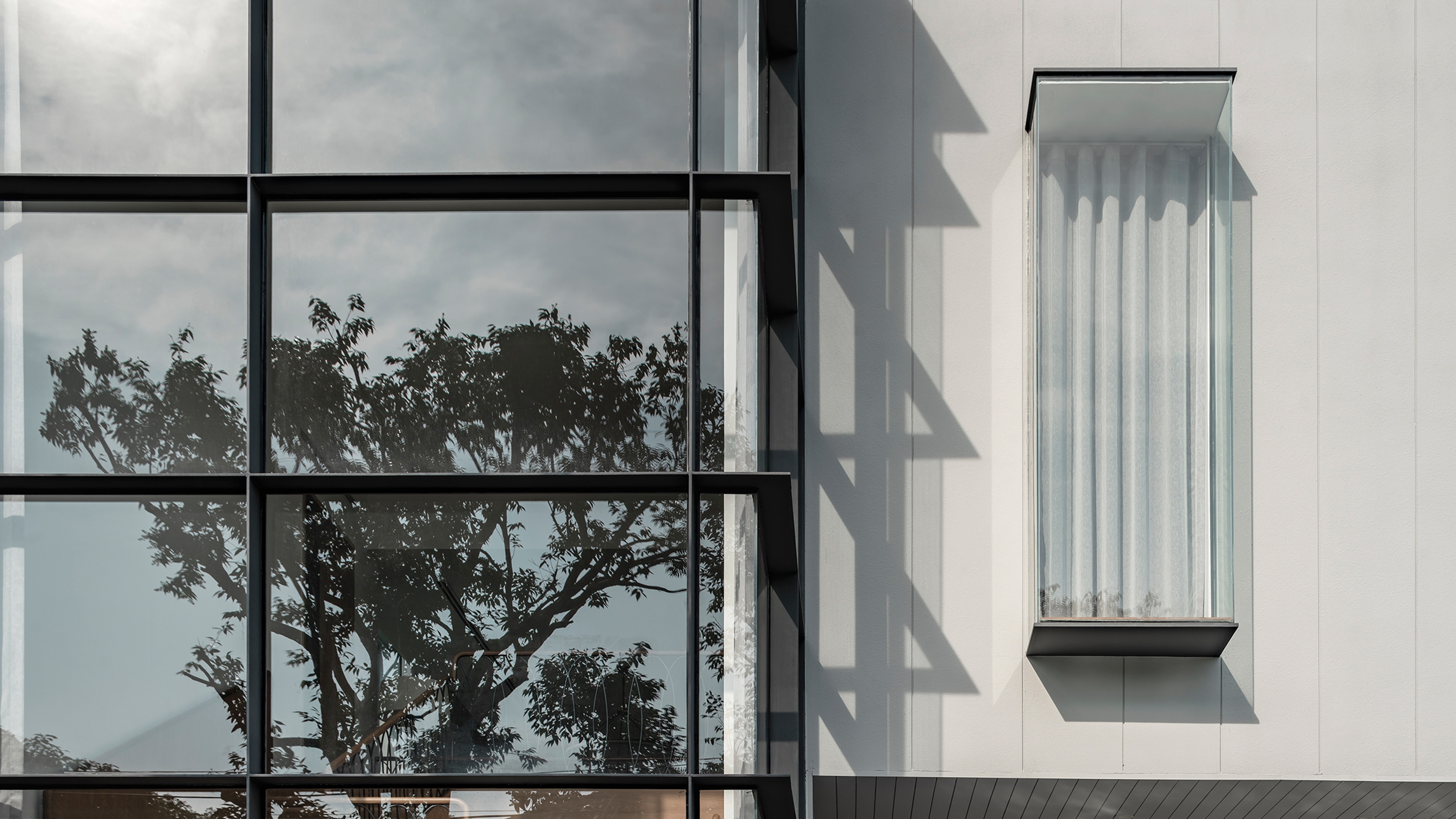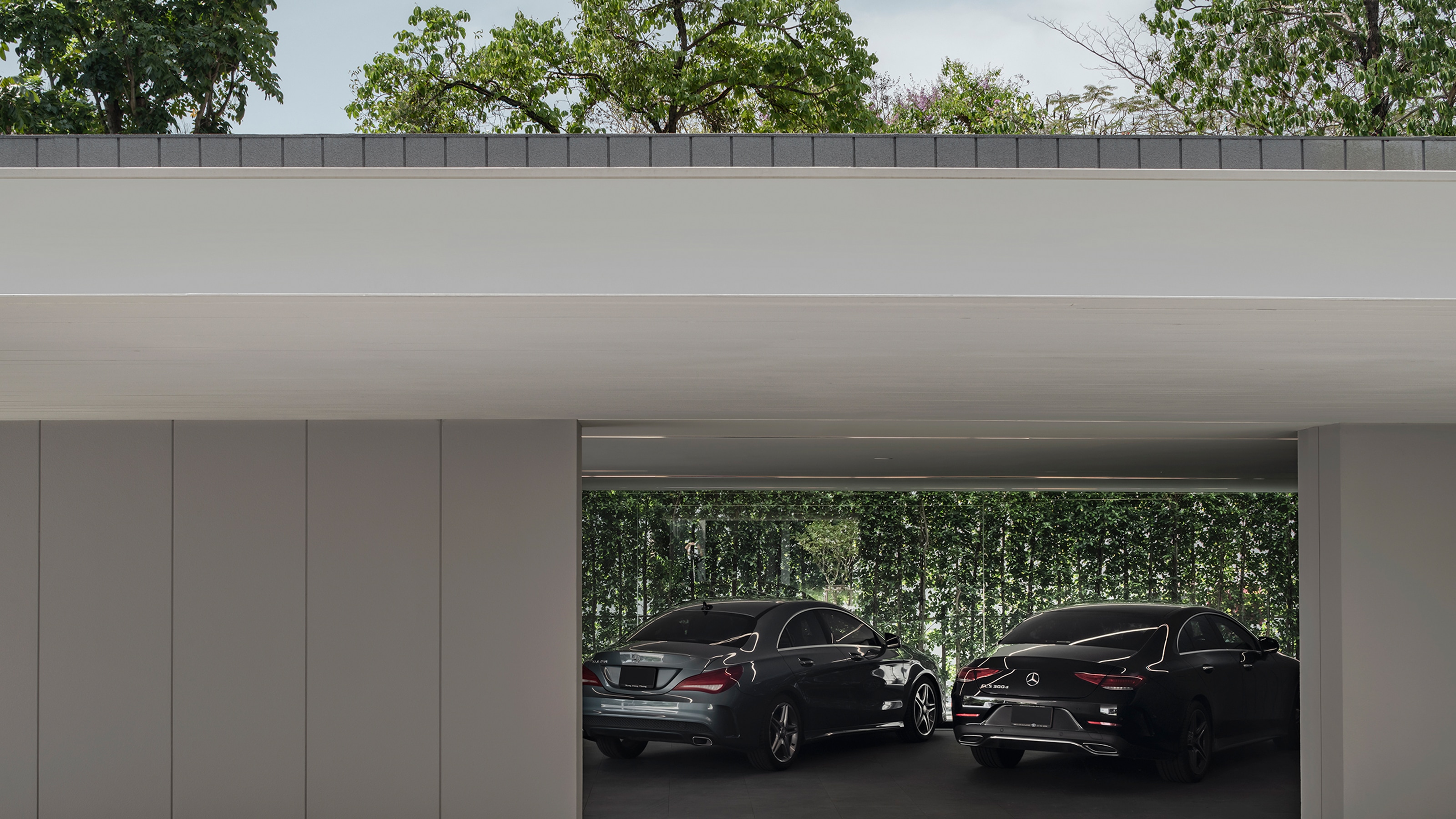A Feng Shui Family Home in Bangkok
When Phongphat Ueasangkhomset and Parnduangjai Roojnawate of Bangkok-based studio ANONYM were first asked to design this family home according to strict feng shui principles, they were somewhat hesitant. ‘At first we were quite reserved about coming on board, because most of the time feng shui masters have recommendations that can be difficult to execute and often involve a lot of constraints,’ explains studio co-founder and design director Ueasangkhomset. ‘But after speaking with the clients, we found that we were still quite free to do whatever we wanted in terms of design, as long as we respected their feng shui checklist.’
The feng shui requirements they needed to respect in designing the 1,200-square-metre home included conceiving a square-shaped plan, positioning the front door to the south and placing water in front of the building. ‘We approached the design with the feng shui recommendations as a starting point, which is quite unusual,’ says Roojnawate, ANONYM’s other co-founder. ‘These rules were probably suitable for building in China 2,000 years ago, so we had to decode and translate them fit with the tropical climate’.
Working within this framework, the designers added a void inside the square-shaped house, breaking its volume and adding an inner court to enhance natural ventilation and light. Warm woods and light-toned materials were chosen to ‘enhance fortune and abundance’, and white and light grey materials such as white marble, travertine, white veneer, white mosaic and off-white paint figure prominently, in places combined with teak flooring, black metal and darker stone for a warm and cosy ambience. Bespoke decorations like the mosaic pattern in the inner court, the rayon veneer pattern in the prayer room and the floor pattern in the master suite add unique touches.
‘Our favourite element in the architecture is how the massing breaks into several geometries and masks the whole volume, while still being in line with feng shui rules,’ says Ueasangkhomset. ‘In the interiors, the staircase is our favourite element. There were rules about the number of steps, and the height, length and shape of the steps, so it was one of the most difficult elements to build, but it became a key sculptural piece in the space,’ adds Roojnawate. ‘The clients were lovely and very open-minded. We spent a lot of time discussing suitable solutions throughout the design process. It turned out to be a lot of fun and we learned a lot more about feng shui.’
Text / Nina Milhaud (Design anthology)
